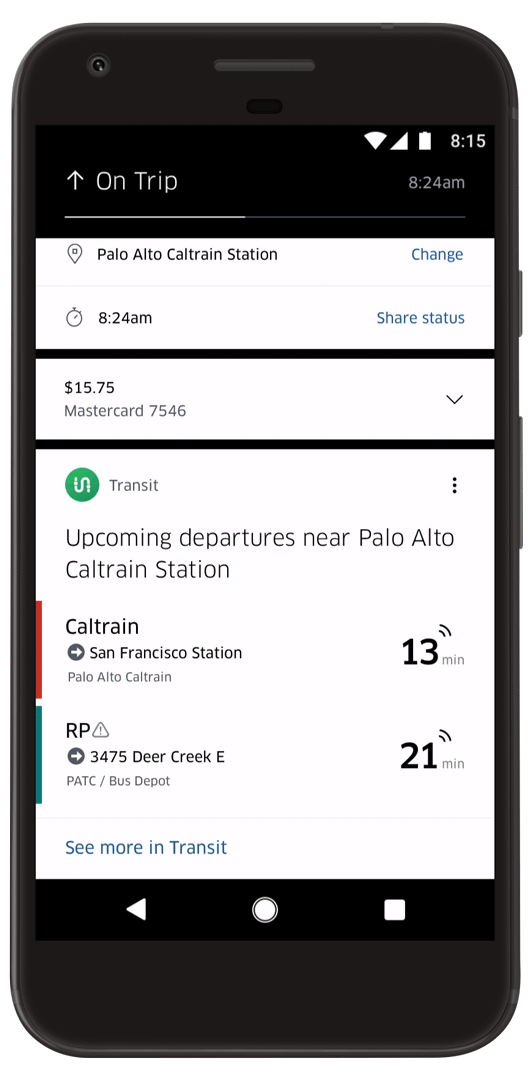Uber Update: App Adds Real-Time Public Transportation Data

Uber’s new latest update is hoping to make your trips easier by showing real-time public transportation data in the app, the company announced Tuesday.
The update should do well for those living in big cities, like San Francisco and New York, and will keep travelers from switching from app to app while traveling. For example, say you live in Queens, New York, you can take an Uber to the train station and then take the train to Manhattan — avoiding crazy traffic. For that trip you would have to go through the Uber app to book a car and a separate app for public transportation information. Uber is fixing that with its new update by partnering with the Transit app, a Montreal-based firm that operates in 125 cities worldwide.
Read: Judge In Uber-Waymo Lawsuit Rules Uber Can Continue Using Self-Driving Technology
“Starting today, when riders are in an Uber and their destination is or a block away from a transit stop, we’ll begin showing them upcoming departure times in the Uber feed,” Uber said in a post.
The Uber app refreshes departure times regularly so users are up-to-date.
Here’s what the update looks like:

By tapping on a certain departure, riders will be taken from the Uber app to the Transit app for A-to-B directions, service disruption information and more details.
“Our integration with Uber is a perfect match, as we both envision a future in which every journey is shared using a combination of transit options,” said Transit app chief operating officer Jake Sion in a statement.
Read: Uber Lawsuit: Company Fails To Accommodate People With Disabilities, Suit Says
Uber listed what it envisions in the future:
Better connected cities, where people easily access all neighborhoods including areas underserved by transit.
A viable alternative to personal car ownership since people can always get a ride when and where they need one. Plus, it’s often more cost efficient to use a variety of transit options rather than owning a car.
Reduced traffic and parking because public transit and carpooling can mean fewer cars on the road and less congestion.
Uber has been working on autonomous technologies and has previously said it plans to develop and test airborne vehicles that are capable of vertically taking off and landing by 2020. The flying cars could be a way to clear up the roads.
Where is the Uber-Transit App Update Available?
The integration will work on Androids in nearly 50 U.S. cities, Uber said. The cities that will be able to see the update are: Albuquerque, New Mexico; Ann Arbor and Grand Rapids, Michigan; Atlanta; Baltimore; Boston; Buffalo, New York; Charlottesville and Raleigh, North Carolina; Chattanooga, Tennessee; Chicago; Cincinnati; Cleveland; Connecticut; Dallas; Dayton, Ohio; Denver; Detroit; Fort Myers, Jacksonville, Orlando and Tampa Bay, Florida; Hampton Roads, Virginia; Honolulu; Houston; Indianapolis; Kansas City; Las Vegas; Los Angeles; Louisville, Kentucky; Madison, Wisconsin; Miami; New Orleans; New York City; Philadelphia; Phoenix; Pittsburgh; Portland, Maine; Portland, Oregon; Sacramento; Salt Lake City; San Diego; the San Francisco Bay Area; Seattle; St. Louis; Washington, and Worcester.
The company did not specify when the Transit app integration will come to iOS devices.
© Copyright IBTimes 2024. All rights reserved.











